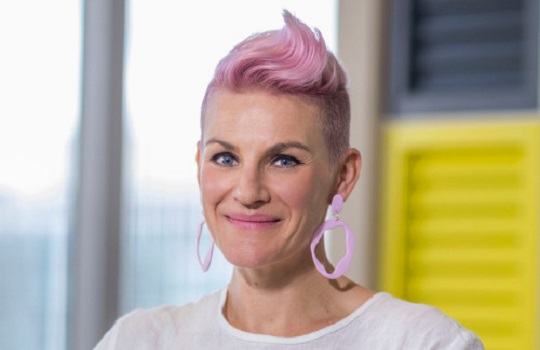
Hyper-personalisation is that sweet spot where customer expectations and products meet price and service.
Fiona Bounias has established herself as one of the foremost change advocates for a sector that had once seemed stuck in a kind of comfortable inertia. For Bounias, TAL’s General Manager, Member Engagement & Innovation, digital innovation is not just about delivering more efficient and cost-effective customer services, but enabling these services to be augmented with a natural humanity.
In the lead up to our Future of Insurance 2022 event, we speak with our featured keynote presenter on what an ideal innovation ecosystem should look like for a life insurer, on utilising digital innovation to stem the decline in policy ownership as well as attract customers and build loyalty, and how the industry is progressing towards to holy grail of hyper-personalised front-line services.
FST Media: What does innovation mean to you – and particularly within the context of an established life insurer?
Bounias: Innovation to me is about doing things differently. This can play out in a myriad of ways and at TAL it can be anything from the words we use when speaking with customers right through to building new customer experiences to challenge or disrupt usual practices.
The life insurance industry is highly regulated and progression and evolution must always take place within this governance framework.
At TAL, we recognise the need to continually innovate and evolve our products and customer experience, so that we’re meeting and exceeding community expectations.
FST Media: Paint us a picture of what an ideal innovation ecosystem and support infrastructure should look like for a modern life insurer.
What should this ecosystem ultimately realise for customers?
Bounias: In an ideal innovation ecosystem, we engage early and continuously review efforts in everything from organisational structure to strategy to business priorities.
Managed closely and well, innovation teams are great at identifying and creating solutions to problems for business units.
In my experience at TAL, the best solutions are delivered when the innovation team collaborates with the relevant business unit, as well as with risk and IT teams.
Having this engagement throughout the incubation phase of the project idea can ultimately deliver a better customer experience, faster.
At TAL, I encourage innovation teams to always ask of themselves: ‘How will this benefit the customer?’. It is easy for teams like this to get excited about new tech, like the latest ‘Random Forest’ algorithm for instance. However, that doesn’t always mean a better experience for the customer. Teams need to be unwavering about how the customer will benefit, otherwise innovation efforts won’t succeed.
FST Media: There can often be a perceived disconnect between the bottom-line imperatives of boards and the innovation ambitions of tech and data teams.
How can tech teams reconcile this split and ensure board buy-in for breakthrough innovations and out-of-the-box thinking?
Bounias: I believe boards and executive teams are much better versed in innovation and technology than ever before. Leaders recognise the value of innovation and are excited about engaging.
That said, there is still a role for boards to ensure that innovation teams are tasked with the right challenges, so they are able to show the runway of benefits to continue to gain support.
FST Media: You’ll be speaking at our forthcoming Future of Insurance 2022 event, which comes after what has been a prolonged period of Covid crisis management.
What pain points, or perhaps opportunities, do you anticipate hearing from your peers?
Bounias: One way to look at it is that the global pandemic has levelled the playing field. In essence, everyone has had to face one of the toughest periods of leadership and business continuity.
In many ways, [Covid has] created a space for people to be more open and share more willingly.
I think most of us are still finding our way towards a ‘new normal’ and I’m excited to hear from my industry peers about how they might be navigating this new period; I’m sure everyone can learn something from others around them.
Notwithstanding the challenges that Covid-19 presented (and continues to present), there is a great opportunity for us all because we’ve never had to operate with such agility. Despite the hardship, this period has shown us how much we can make happen when we really need to – and that’s something at TAL we are both excited and proud about.
FST Media: Life insurance policy ownership in Australia has seen a marked decline over the last decade (with a 10 per cent year-on-year drop in 2021, according to KPMG).
How can digital serve to enliven the industry and make life insurance relevant to the next generation of customers? Further, with the flexibility of online services, how can life insurers build customer loyalty?
Bounias: Customers often aren’t in regular contact with their life insurer until something unfortunate has interrupted their lives and they are calling on their life insurance products.
We all have a role to play in shifting the narrative about our products to make them simpler for people to understand. For me, this starts with language.
You could have the best digital experience in the market, but if customers don’t understand your product, it’s unlikely they’ll buy it.
There is a job to be done in simplifying our product. Life insurance should be as well understood as some of our adjacent general insurance products, and I think language (and of course product design) plays a big role here.
It is up to us, as insurers, to find ways to meaningfully engage with our customers outside of annual renewal processes. There are a lot of things insurers are thinking about in this space, from mainstream health reward programs to accessing personalised data – but one thing to carefully consider is the mutual value exchange.
At the end of the day, offering a seamless and transparent digital experience has become a hygiene factor, and this is where organisations will stand out.
FST Media: Hyper-personalisation of service and policies appears the next innovation milestone for insurers.
What are some of the critical – perhaps ‘missing link’ – systems, operations, or processes needed to properly deliver this capability?
Bounias: Hyper-personalisation is that sweet spot where customer expectations and products meet price and service. Never before has data been so available and with the right exchange of value, customers are increasingly becoming willing to share it. In my opinion, there are a couple of key ways that data exchange can serve both insurers and customers.
The first thing is price. Broadly speaking, many people don’t understand pooled risk, but this is the premise for how our product is priced. Everyone pays into the pool and the risk is shared.
There’s definitely room for improvement when it comes to better tailoring products, and how they are priced, based on an individual’s health profile.
The second is engagement. It’s not uncommon for people to think about their life insurance cover as a ‘set and forget’. For many, this means they run the risk of underinsurance, as their product may not have considered their personal needs and, therefore, may not respond to their changing needs.
A digital shift would allow customers to review and upgrade their cover from their smartphone device, and within moments. Of course, there are regulations that insurers must consider and navigate; this sets the framework for how we are responding to this challenge at TAL.
FST Media: Authoritative, relaxed, consensus-building or outcome-driven…
How would you define your leadership style, and what is your secret sauce for getting the most out of your human and digital capital?
Bounias: I would describe my leadership style at TAL as ‘affiliative’. I am very much about creating connections with people in my team, as I believe it fosters a culture of trust.
When people trust you, they follow you.
I think getting the most out of both people and digital capital is about finding the right problems to solve with the right solutions.
Digital will never replace the nuance of a person and it’s about identifying which problem requires the right solution. Replacing a repetitive, routine and volume-based task with a digital solution creates capacity for people to do more of what they are good at. Capacity is often what hamstrings people from delivering their best. Imagine giving them back the gift of time to do it!
Fiona Bounias will be a featured keynote speaker at our upcoming Future of Insurance, Sydney 2022, looking to demystify myths around augmented underwriting, and preparing insurers for a wave of innovation in AI.





